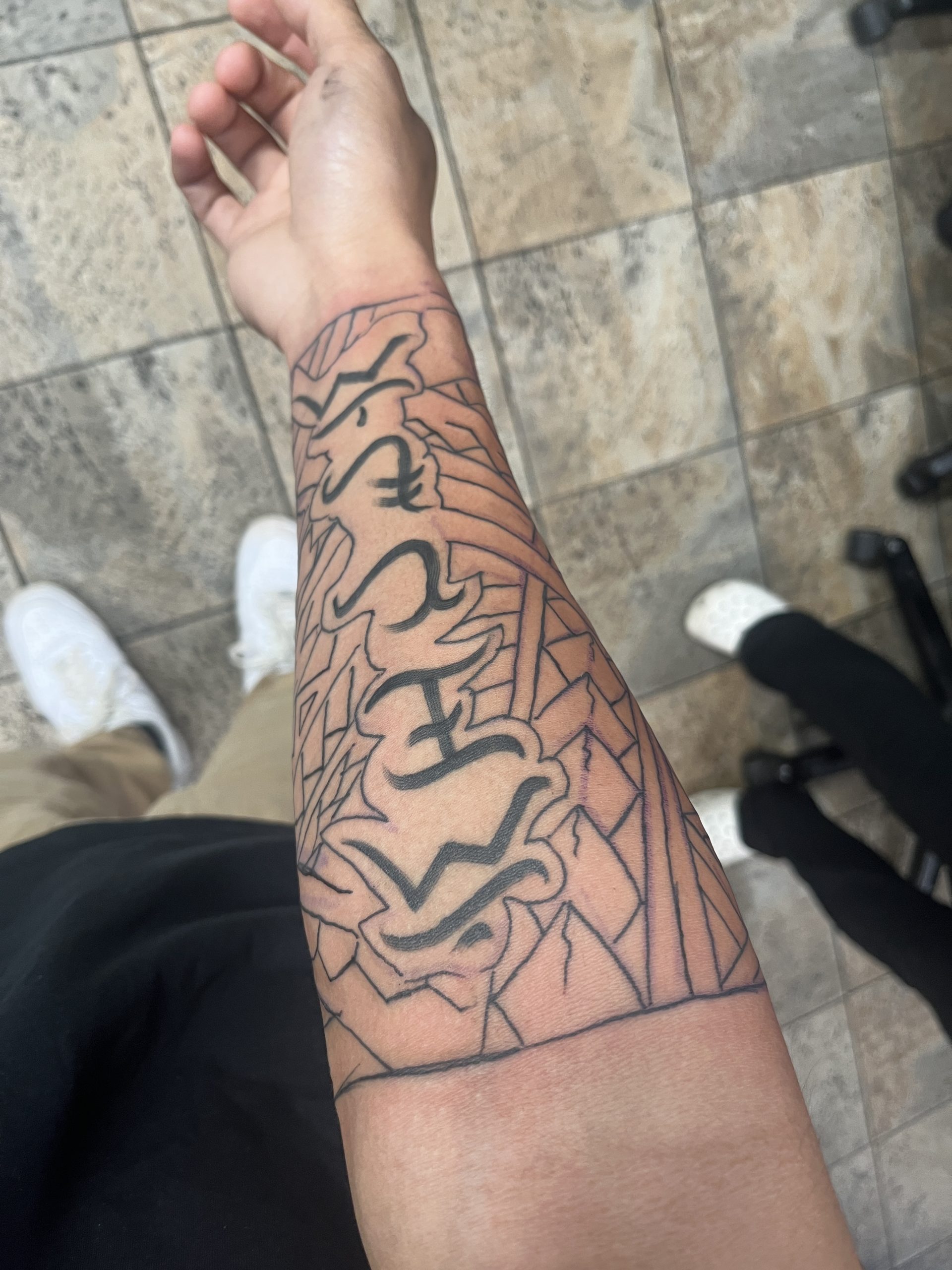Tattoos are known as one of the earliest forms of self-expression, stemming from centuries of culture and society. But throughout the years, some tattoos have strayed away from tradition towards becoming a modern and artistic way for people to portray themselves. The act of permanently inking one’s body has seemingly never been as popular with the youth than now.
Senior Bless Asuncion has the word “resilience” tattooed in cursive writing on the side of her neck, she said. The word is defined as the ability to persevere through hard times and stand strong when faced with adversity, she added.
“It’s my word; it represents me and says who I am,” Asuncion said. “I consider myself a very argumentative and independent person … whenever a problem arises, I can be resilient through it all.”
Asuncion chose to locate the tattoo on her neck because it could be shown off or hidden, depending on the situation, she said. She got the tattoo at a parlor called New Generation Tattoo, located in downtown San Jose, she added.
“While preparing his tools, the tattoo artist asked me at least five times if I spelled ‘resilience’ correctly,” Asuncion said. “Even after he searched it up, he said, ‘Are you sure this is how you want it to be?’ The actual process barely took 15 minutes and it was completely painless. If anything, it tickled.”
In the state of California, it is illegal for minors to get tattoos, so Asuncion waited five days after her eighteenth birthday to do so, she said.
“It was kind of an impulse decision,” Asuncion said. “My cousin and I have always wanted to get a tattoo together. So when the time came, I didn’t even tell my parents … they were chill about it when I showed them.”
Senior Aiden Agustin has a tattoo of a Filipino tribal pattern encompassing his family’s last name, which is engraved in an ancient Tagalog writing called Alibata, he said. The tradition of tattooing a Filipino marking has been passed down his family for generations, he said.
“My dad’s side is very in touch with their roots and their lifestyle reflects it,” Agustin said. “All of my uncles and aunties are tatted up with some sort of Filipino marking. By giving away my body to this tradition, I get to relate to them. I get to show everyone that I’m proud to be Filipino.”
Agustin’s uncle, who owns a tattoo parlor called D A Underground Tat-2, freehanded the Filipino tribal design, Agustin said. The tattoo is located on his right forearm to represent his bond with his family, he said.
“It’s my dominant arm, my strong arm, and I’m always using it, just like I am always using the grace that my family has given me,” Agustin said.
Agustin said he has yet to complete his tattoo. He has been looking forward to his third tattoo session, when he plans on having the tribal pattern shaded, he said.
“I also want to get a Filipino Tribal for my shoulder and chest piece and I’m also thinking about getting one from my ankle to my kneecap,” Agustin said.
Senior Kaliyah Mendoza has a tattoo of an Unalome woven into a lotus flower on her left wrist, she said.
“The design took me about half a year to figure out,” Mendoza said. “My mom emphasized, ‘You’re getting this tattoo, it’s going to stay on you forever,’ so I had to do my research to tell her the meaning of my whole tattoo and to show her that I knew what I was getting into.”
The Unalome is a Buddhist symbol that represents one’s path to enlightenment, Mendoza said. It consists of three parts: the spiral (the starting point of your life), the swirl (the tangled mind that becomes centralized and focused over time), and the three dots (the simple wisdom achieved in the end), she said. Mendoza, who is half-Cambodian, said that the lotus flower is sacred in her culture as it symbolizes beauty, prosperity, and harmony.
“The lotus flower is considered pure as it emerges from the murky water, yet it still comes up clean and beautiful,” Mendoza said. “To me, the lotus represents myself and the water is the challenges I face in life.”
Mendoza got her tattoo in Las Vegas from a private tattoo artist, she said. She treats tattoos as a sort of “ink therapy,” she said.
“Ink therapy is the process of getting tattoos to cope with experiences you’ve gone through,” Mendoza said. “Leaving a mark on you serves as a reminder of how far you have come.”

